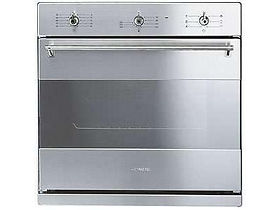

Manuals
The purpose of this page is to show you how some of the stuff works in the house!
-
Coffee machine
-
Milk frother
-
Main bedroom remote
-
SMEG: Gas hob
-
SMEG: Electrical oven
-
Morso wood burning stove
For the perfect Cuppa
1. Preheat your cup by runnin a hot of hot water (no capsule) into your cup
2. Empty the water from the heated cup and insert the capsule (underneath the
silver lever)
3. Select "Espresso" (40ml) or "Lungo" (110ml) button
4. Lift lever when finished pouring to eject the capsule into the capsule basket
5. Add milk and sugar to taste and ENJOY!
To clean the machine
Run a shot of hot water (no capsule) into a cup.
Clean the capsule basket by pulling the "foot" forward.


Foam for you cuppa
Pour milk into the jug
Check the maximum capacity
Push the button to start
Light flash when done
Tips:
- use whole milk (i.e. >3%)
- Rinse the frother after each use and wipe dry
Don't place it in the dishwasher

Main bedroom remote
Ensure that the remote is set as the second TV.
Do this by selecting "Shift" and "Exit"



Gas hob
The gas hob has an electric started. However, sometimes the pin becomes moist and the ignition does not want to work.
Solution: Take the hairdryer and blow hot air directly on the pin for at least 3 to 5 minutes. This usually does the trick. If this does not work, contact us.
For more information:
For more information:

Morso 04 wood burning stove
The heating capacity of the stove is regulated with an air-slide control, positioned under the ash lip.
Lighting and fuelling intervals
A lot of air is needed when first lighting the stove. When starting with a totally cold stove, it may be helpful to leave the door ajar (2-3cm) during the first few minutes; the air intake should be fully open. Wood fuel burns well when placed onto an ash bed on the grate of the stove.
To achieve this you should burn roughly 1-2 kg of dry kindling the first time you light the stove. You should build and maintain the ash bed to a thickness of approximately 1 cm.
-
A layer of coals will form rapidly if the stove is lit with 2 - 4 fire lighters or 7 - 10 rolled up sheets of newspaper, underneath roughly 1 kg of dry kindling.
-
Fully open the the secondary air supply. Push the air control right in.
-
After the paper/firelighters have caught fire leave the fire door ajar 2-3 cm so that the chimney draws well.
-
After 5-10 minutes the chimney draft should be established, at this point close the fire door. If all the necessary conditions are met, a nice layer of embers will start to accumulate after another 15 - 20 minutes.
-
Refuelling of your stove should be done while there are still glowing embers in the bed. Spread the embers across the bottom, but concentrated mostly towards the front of the stove.
-
Place three pieces of fuel weighing roughly 0.6 kg and measuring about 25 cm in length across the embers in one layer, with spacing of roughly 1 cm between the pieces of wood.
-
When the secondary air supply is opened all the way and the door is closed, the new fuel will ignite in a few minutes.
-
Once the new fuel has taken, adjust the secondary air amount to the desired setting; optimal combustion will continue until glowing embers are produced. Under normal chimney draft conditions, expect to refuel your stove every 60 - 70 minutes.
-
A new charge of wood can be added by repeating steps 5 & 6. The stove door should normally be opened gently the first 2 - 3 centimetres, then you should wait until the pressure has equalised before opening the door all the way. This technique will prevent smoke from getting out, particularly when there is a poor draught. The stove door should never be opened when the stove is being fired vigorously. Once the wood has burned out, it becomes glowing charcoal. If a good layer of embers has already formed on top of a sufficient layer of ash, the stove can keep warm for a very long time, not least due to the favourable qualities of the cast iron.
We would strongly recommend that you do not leave your stove alit at night. It harms the environment, and constitutes very poor use of the wood, as the gases in the wood do not ignite at the low temperature, but settle as soot (unburned gases) in the chimney and stove. Extreme conditions, such as poor draught in the chimney, large quantities of wood or wet wood, may, in the worst-case scenario, cause an explosive ignition.
When firing in the summer period, when there is minimal need for heat, the combustion will be poor. The stove provides too much heat, so the combustion should be reduced. But always remember to make sure that there are lasting flames until the wood becomes charcoal. If you want a weaker fire, stoke up using less wood.
If you fire the stove using wet wood, a lot of the fuel’s thermal energy will be spent forcing the water out of the wood, without releasing any heat to the stove. This incomplete combustion results in a layer of soot being left in the stove, pipe and chimney.
For more information: